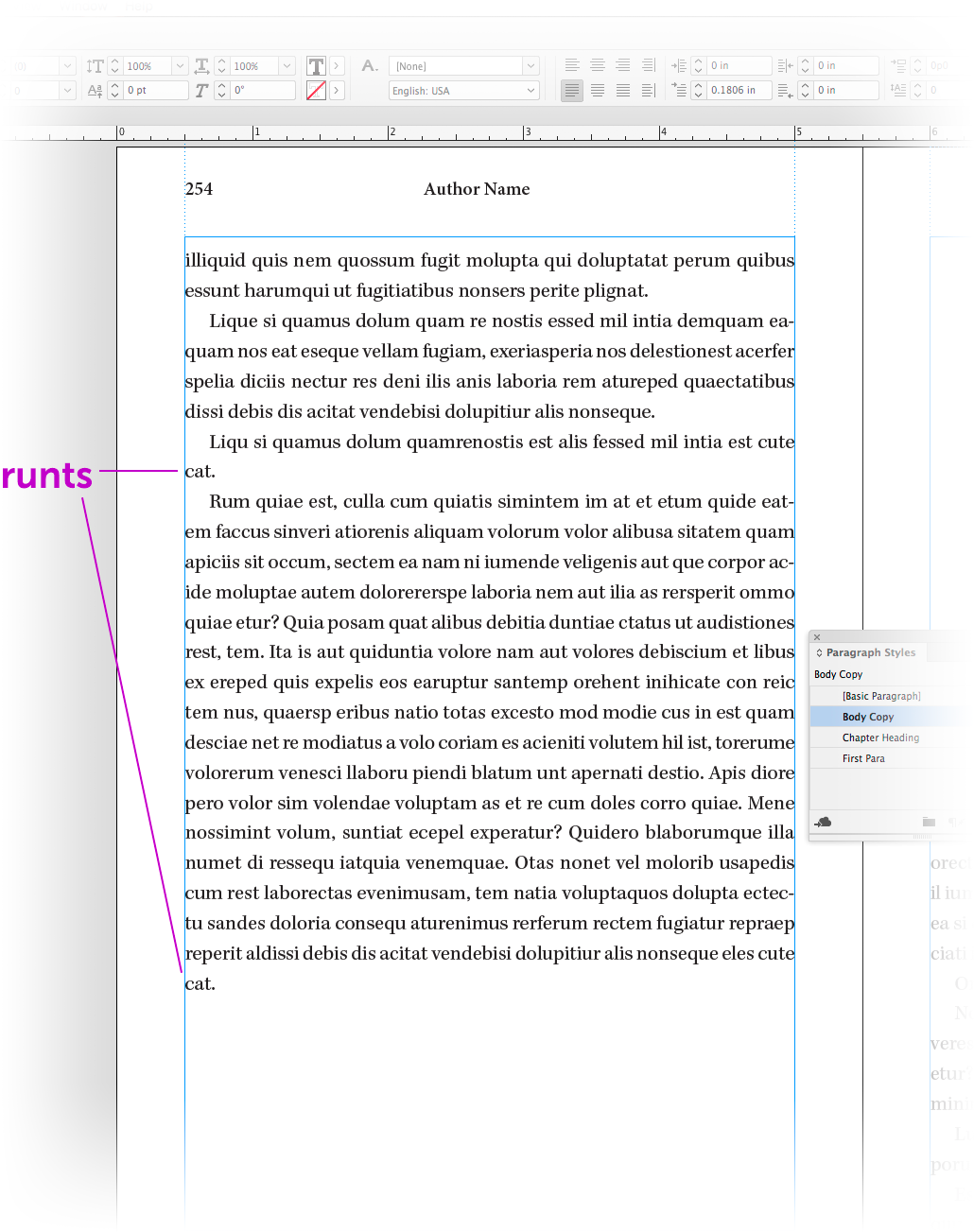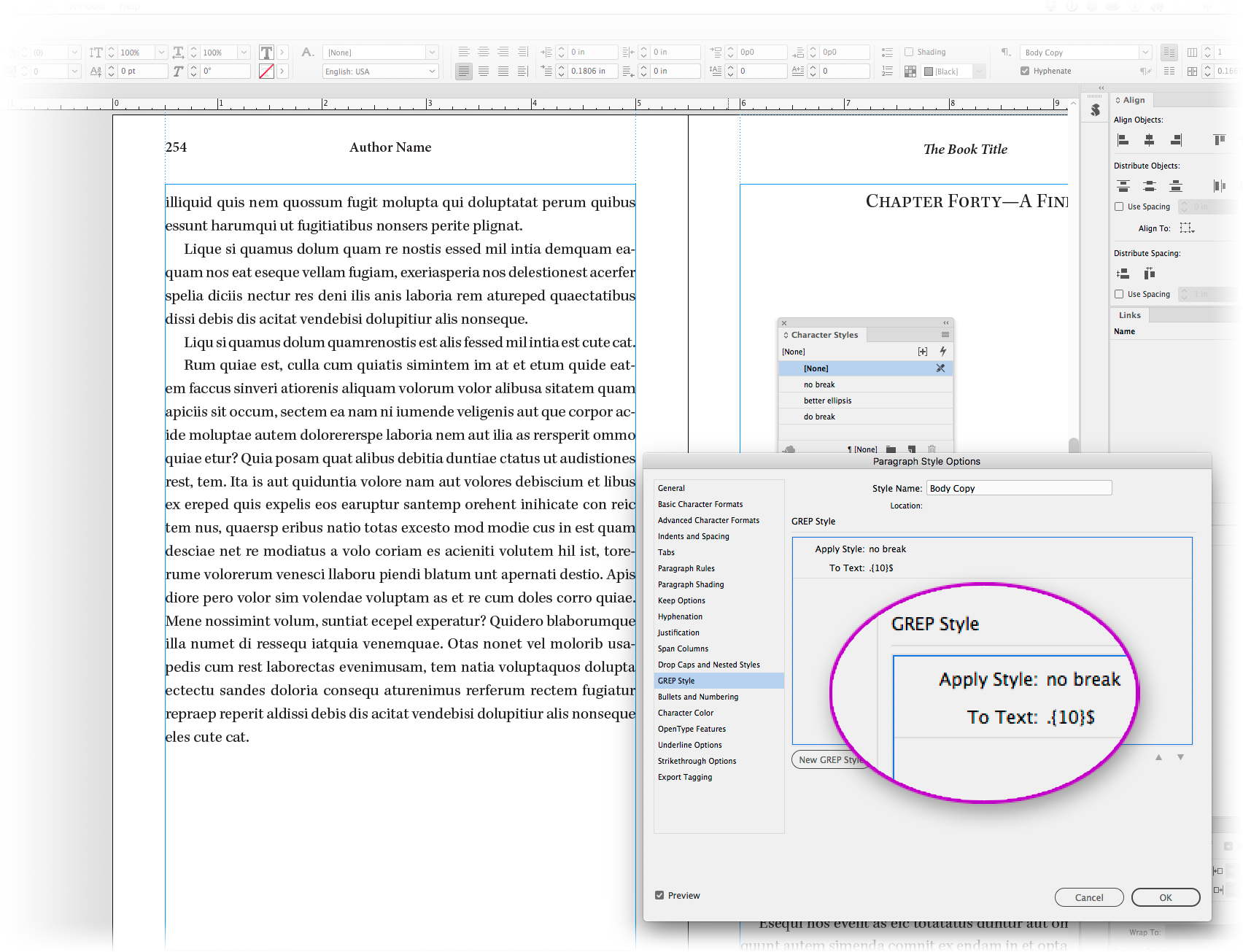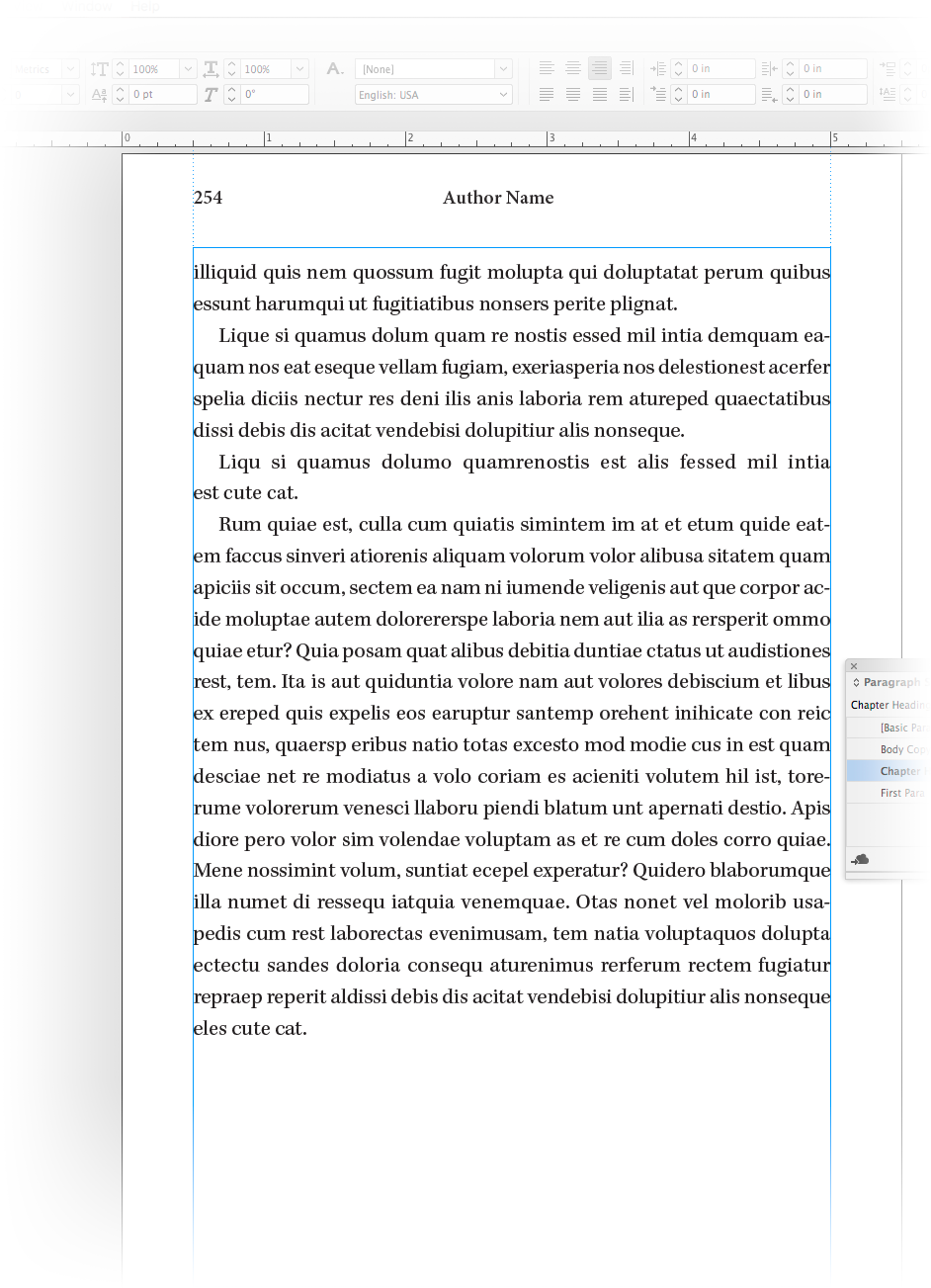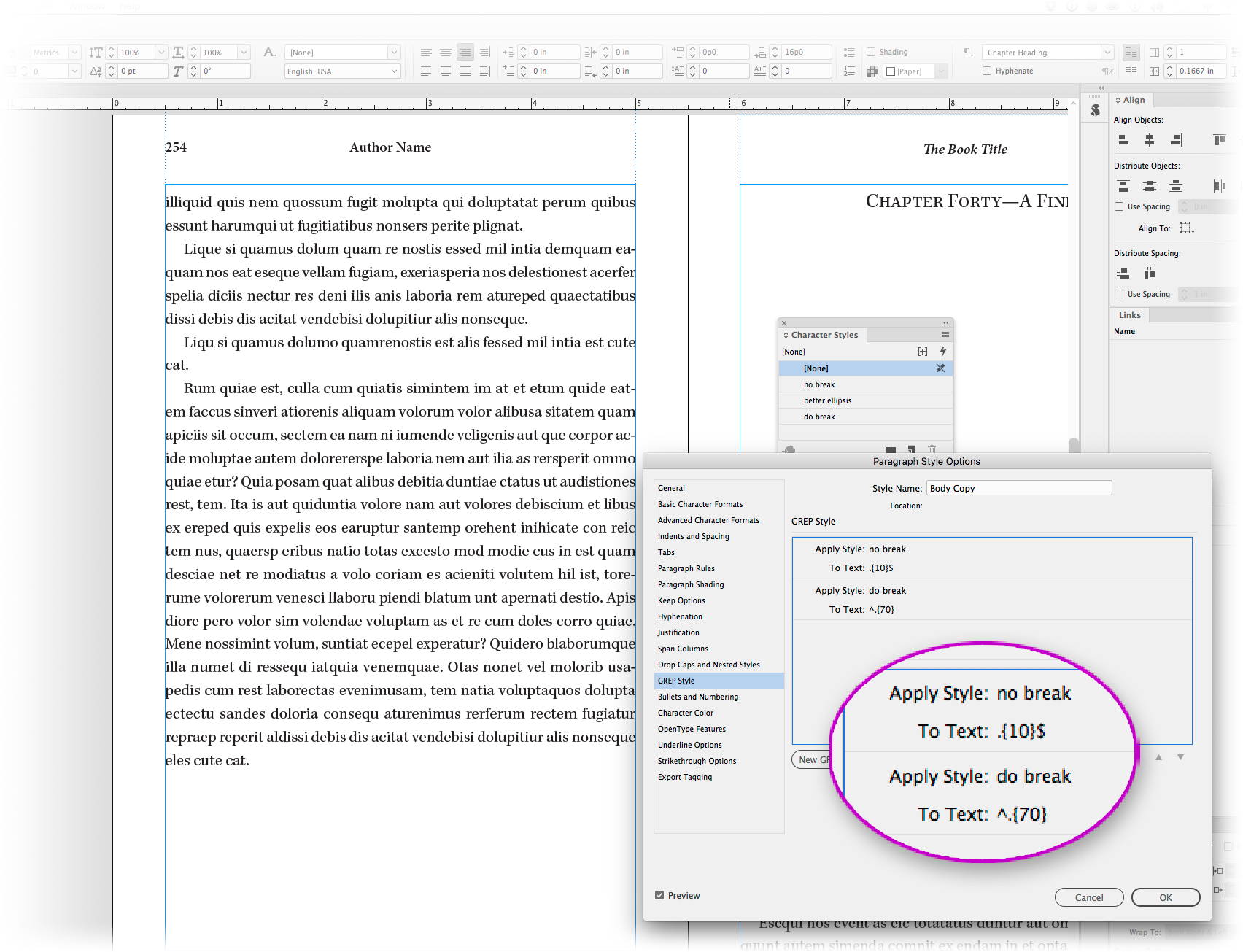
Luminous Works Class Calendar | More Tips
We generally like to avoid any fewer than about ten words on their own line at the end of a paragraph. Those annoyingly short words/phrases are frequently called "runts" so as not to be confused with "orphans" or "widows". I like a suggestion I read once to call them "urchins," but no one does, so "runts" it is. Preventing the last word from hyphenating is easy: edit the Paragraph Style and, in the Hyphenation section, uncheck Hyphenate Last Word. But keeping a healthy chunk of characters together is a little harder.
First, make a couple Character Styles: name one No_Break and the other Do_Break (or similar). For the first, use the Basic Character Formats section and check the box for No Break. A quick check of the Style Settings in the General section of the same dialog box will read "[None] + no break".
For the second, be sure that box is not only unchecked but empty. These check boxes can be checked, completely unchecked, or neutral (ignored). For Do_Break, we need that checkbox positively unchecked. A look at the Style Settings in the General section of the same dialog box will read "[None] – no break".
Now we're ready to edit the Paragraph Style(s) that need de-runting.

Edit the Paragraph Style and go to the GREP Styles section. Hit the button to add a New GREP Style. Here, you choose the text pattern that gets affected and the Character Style that affects it. In the field labeled "To Text:", type .{10}$ (period, left brace, ten, right brace, dollar sign). Obvious, right? Not at all! The dot means any character, the ten in braces means ten of them, and the dollar sign means end of paragraph. You just targeted the 10 characters at each paragraph's end! Adjust that number to taste.
To style those characters (to prevent words from breaking within those ten characters), go to the "Apply Style:" menu (it will look like a menu when you click on it) and choose No_Break. See the figure below:


Edit your Paragraph Style(s) again and get back to GREP Styles. Add another New GREP Style. The style to be applied is our Do_Break Character Style. The pattern is this: ^.{70} (caret, period, left brace, seventy, right brace). The caret means beginning of paragraph. So we've told the first 70 characters will break (adjust the number to what works best for your size text and columns). Although in our shortest paragraphs this means both Character Styles are applied, the latter GREP style wins. I'm willing to have a runt rather than that really ugly word spacing. But this will be in shorter paragraphs only.
